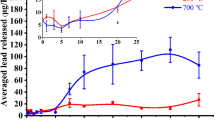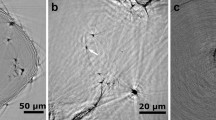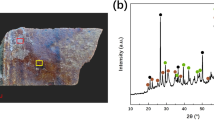Abstract
IN the course of a recent investigation into the ageing characteristics of lead–antimony alloys1, microscopical examinations of a range of aged specimens were carried out and recrystallized areas were observed in a number of the specimens which had been strained prior to ageing. The specimens had been prepared by the normal metallographic techniques of grinding and polishing and had been etched in Worner and Worner's reagent2 to disclose the extent of precipitation. In a number of the specimens the precipitated antimony was cleared from the surface by a brief immersion in concentrated nitric acid (s.g. 1.42) and subsequent examinations showed the recrystallized areas to be covered with networks of fine lines producing an appearance of sub-grains, similar to that due to polygonization, which had been absent from the specimens prior to the nitric acid treatment.
This is a preview of subscription content, access via your institution
Access options
Subscribe to this journal
Receive 51 print issues and online access
$199.00 per year
only $3.90 per issue
Buy this article
- Purchase on Springer Link
- Instant access to full article PDF
Prices may be subject to local taxes which are calculated during checkout
Similar content being viewed by others
References
Hooker, E. J., J. Inst. Metals, 86, 98 (1957–58).
Worner, H. W., and Worner, H. K., J. Inst. Metals, 66, 45 (1940).
Author information
Authors and Affiliations
Rights and permissions
About this article
Cite this article
HOOKER, E. ‘Sub-Grains’ and Etch Figures in Lead. Nature 181, 180–181 (1958). https://doi.org/10.1038/181180b0
Issue Date:
DOI: https://doi.org/10.1038/181180b0
Comments
By submitting a comment you agree to abide by our Terms and Community Guidelines. If you find something abusive or that does not comply with our terms or guidelines please flag it as inappropriate.



